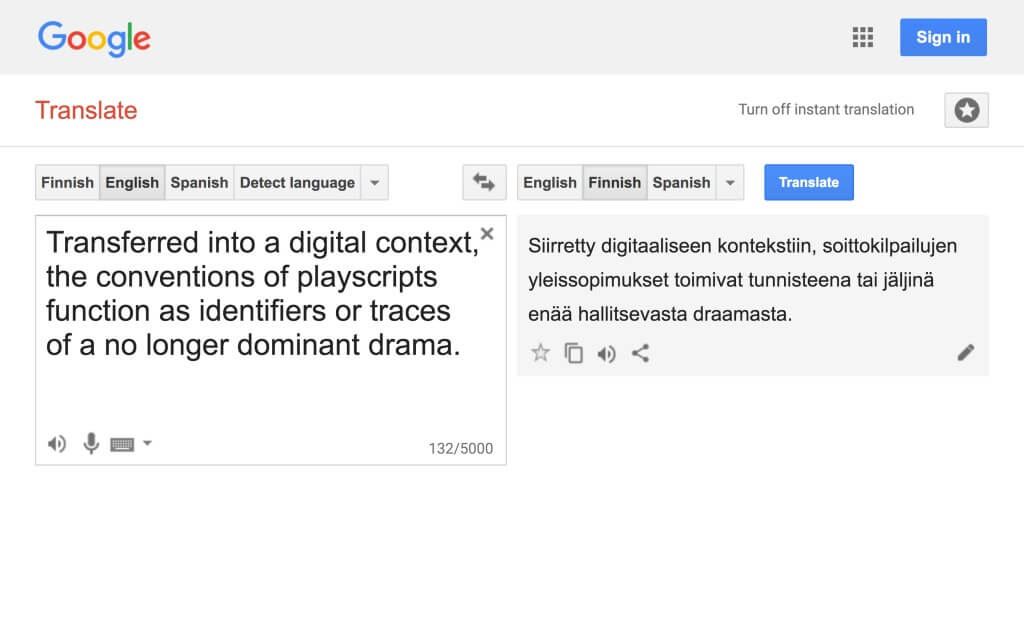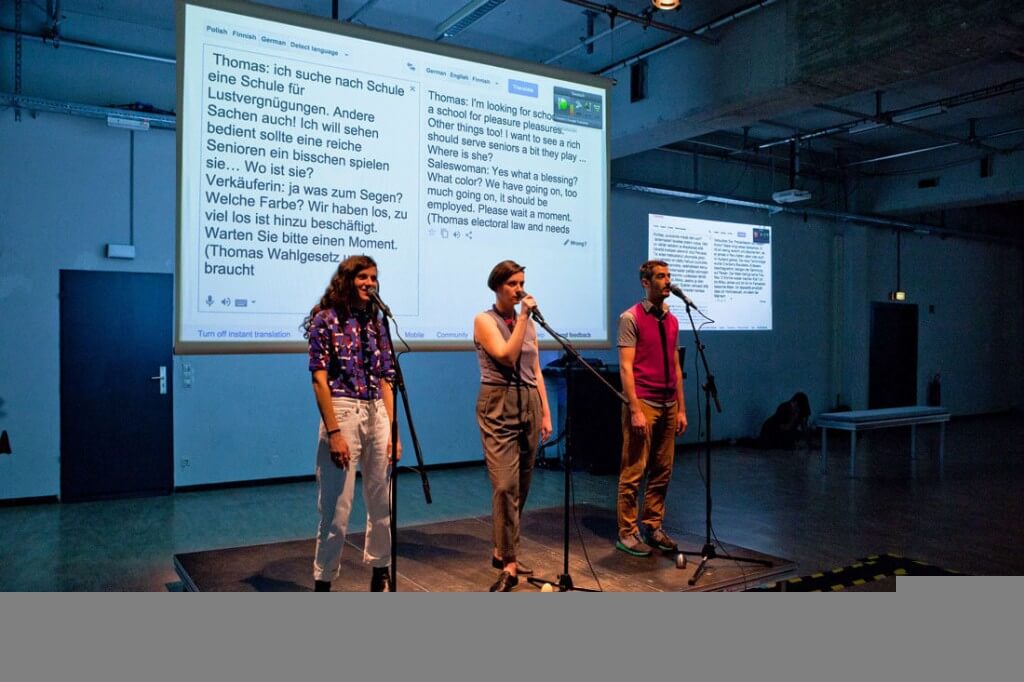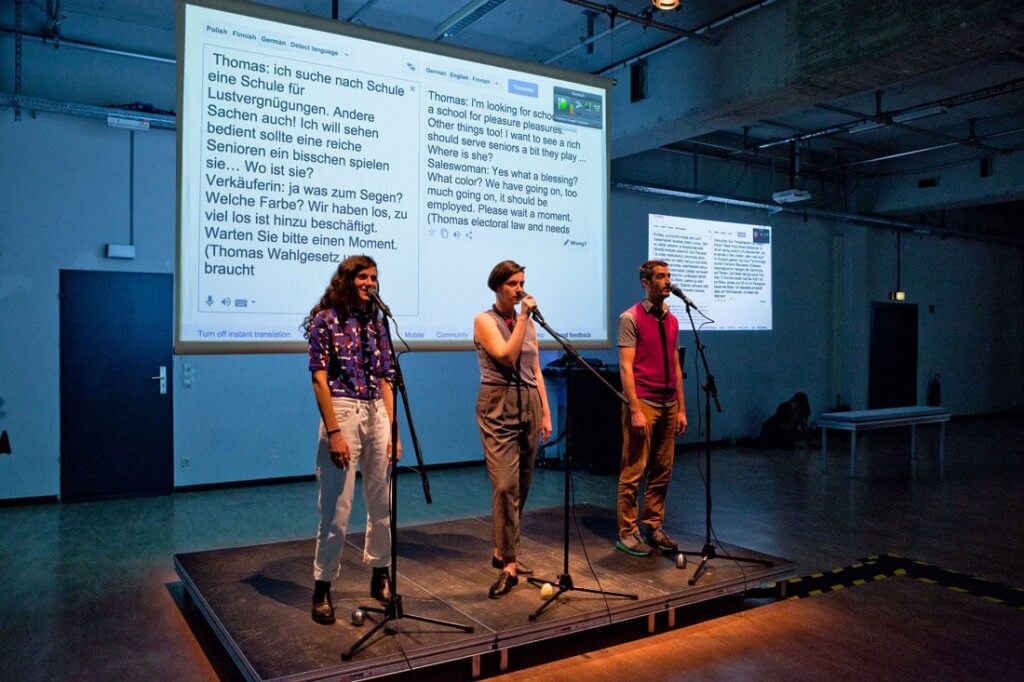1.7 Fragment 7
- Fragment 7, adapted from Hayles passage 6
In this response to fragment 7, I wish to remain a little longer on the discussion of playscripts that I begin in 1.6, as it is a key to understanding the artistic parts of this research. I refer here to how drama as a form moves somewhere in between literature, performance, and the digital (Worthen 2010, 1–22). For this very reason, it may still be a useful medium even for performance work that is not by definition dramatic. Such works include the artistic parts of this research, the stage performances love.abz and (love.abz)3, which are not dramatic theater per se, although they utilize elements of it (see 2.7 and 3.4).
I turn to W. B. Worthen’s analysis of the relations of drama and performance in Drama—Between Poetry and Performance. In Worthen’s examination, plays are textually multilayered, multi-functional, historically encoded constructs. Worthen names Shakespeare as a prime example of a dramatist whose plays have, in the past four hundred years, experienced paradigmatic changes with regards to their conceptualization and use, changes impacted by cultural shifts from orality to literacy, and from print to digital culture. (Worthen 2010, 1–7)
Worthen sets out to locate the place of writing in how we conceive of the relationship of writing and performance. To demonstrate the historical uses of Shakespeare’s plays, Worthen differentiates between Shakespeare 1.0 (script as material for performance), Shakespeare 2.0 (the play as literature), and Shakespeare 3.0 (digital Shakespeare) (1.7EN1). Understanding plays exclusively as literary products is as problematic as conceiving of them solely as material for performance. In addition to this “drama’s unresolved conflict with the book” (Worthen 2010, 3), the nexus of dramatic writing and digital media that modify and produce text is also full of potential conflicts. (Worthen 2010, 4–7)
Usable Conventions
Of particular relevance for this study is the attention Worthen pays to the textual conventions that playscripts uphold. As Worthen points out, these conventions in themselves already reveal the tensional in-betweenness of the dramatic text. The twofold stage directions that Worthen describes, for example, disclose the internal divisions of the playscript. Worthen distinguishes between stage directions that relate to the function of the script as material for performance (Shakespeare 1.0) and stage directions that relate to its role as literature (Shakespeare 2.0). The former conventions (script as performance material) include stage directions concerning actual stage happenings: scene and act divisions, references to characters’ entrances and exits. (Worthen 2010, 3)
The latter conventions (play script as literature), on the other hand, include lists of characters, spoken lines being assigned to specific characters, and stage directions that concern the fictional world of the play (Worthen 2010, 3). Some of these conventions—mainly stage directions relating to both the fictional world of the play and to (imagined) stage events, in addition to occasional scene divisions—are put to use in the improvisational, collaborative form of dramatic writing that is one of the writing practices at the center of this research.
- Fig 1.7.1 Writer-performers of the second artistic part, (love.abz)3, along with a text they have written containing speech prefixes and stage directions. Lee Meir (left), Ania Nowak (center), and Josep Caballero García (right). Photo: Anastasya Stolyarov
The purpose of these conventions in this new context is to offer the audience a visually recognizable textual form, the format of drama—or “identifiers and traces of drama,” as DAR proposes in fragment 7. Applying Hayles’s claim concerning the sciences to performance, I propose that in a new, digital context dramatic conventions “become visible as media-specific practices [associated with print] rather than the largely invisible status quo” (Hayles 2012, 2). Thus, drama is still a part of the practice dealt with in this research, although no longer as the dominant practice—rather as a practice among other performance practices.
Note
1.7EN1
The division presented in 1.6—1) the script as literary product, 2) the script as tool for performance making, and 3) the script as (part of) performance—and Worthen’s division can be seen as variants of each other.



